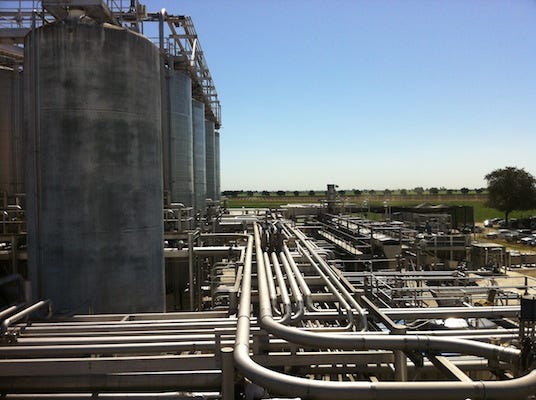🗓️ Day 11 - What’s needed for Pass, Merit and Distinction 🎧
Foundational knowledge & Red AOC Côtes du Rhône 🍒
Podcast episode 2 with Erica Dent & Jim Gore
Quick jumps
03:00 - Surprise! You don’t need to learn everything!
04:25 - Building a compass vs. collecting signposts
06:00 - Study time needed for Pass & Merit+
08:30 - Mastering WSET's unique examination style
10:30 - Skills needed to smash theory vs. tasting
13:00 - What's behind the 2025 Vintner's Cup winner's glory
16:30 - Want a Distinction in tasting? Four must-dos
19:15 - Scoring that Distinction in theory
Where to find Erica and Jim?
Erica Dent: Website | Instagram | LinkedIn
The D4 and D5 workshops that Erica mentioned as the only courses that still have space will run this September, in person, in Winchester, UK 🇬🇧 This will be a great to rediscover your passion for bubblies and stickies after months of fun-killing exam prep 😂
Jim Gore: Website | Instagram | LinkedIn
As mentioned in the podcast, Jim is offering a blanket 20% off on his super helpful tasting course to celebrate the revamped course structure. He can now deliver samples to Europe, too 🇪🇺
This discount lasts until September. Past students can’t stop raving about the course. So act fast!
The power duo also does a series of workshops called Match Fit, where they challenge Diploma students to be curious, meticulous, and self-sufficient.
Jim will be leading the course in preparation for the October exams. Next year, Erica will return and join Jim for the Match Fit course, which runs up to the May exams. You can reserve a spot for the course here, all for free!
💪 Warm-up question
We are taking Jim and Erica’s advice today. Let’s build that structure of understanding before we dive deep into details.
Active recall time
What are the three extraction options for high-volume, inexpensive red wines?
What are the key steps?
How do they change the final aroma and flavour profile of the wine?
Why are they cheap to do?

You will find the answer to this warm-up exercise at the end of this entry. But please give it a go yourself first 😉
✍️ Past exam question
Question one from the October 2021 exam
Explain how the following provide different options for the production of a high-volume, inexpensive red AOC Côtes du Rhône:
a) AOC regulations (30% weighting)
b) Grape growing (30% weighting)
c) Winemaking (40% weighting)
💡 Examiner’s feedback
© Wine & Spirit Education Trust (WSET)
In any multi-part question, answers must reflect the weighting given to the various sections. On this occasion the split is fairly even but there was little evidence of this in many of the answers. The first section concerned the AOC regulations for red Côtes du Rhône which covers a lot more than simply the geographical location of the vineyards and the permitted grape varieties which were frequently the only topics addressed. Successful candidates took a wider view and looked at regulations relating to planting density, permitted training systems, irrigation rules, maximum yields and minimum alcohol levels. Marks were awarded for recognising that these come under the remit of the AOC regulations, but higher scores were given to those who included specific detail - for example, it is not enough to simply note that yields for inexpensive wines will be higher than those for premium examples because there is still an upper limit, and marks were given to those who knew what it is.
The second section, grape growing, was an opportunity to explain which grape varieties of those permitted were favoured and why, from where they are most likely to be sourced, and importantly how they are grown. The permitted varieties all have their advantages and disadvantages for this type of wine, and this needed to be explored. Also, because the focus of this question was ‘inexpensive’, organically or biodynamically grown grapes from the Northern Rhône were not relevant here.
On a positive note there were some good answers for the third part of the question, demonstrating the application of prior knowledge of techniques that are used to make low-tannin, fruity wines quickly; but there were also a lot of superficial answers that, for example, only described one winemaking option or did not discuss other important topics such as blending, which is crucial in the production of large volumes of consistent wine. Regardless of how well this winemaking section was answered, marks that were lost in the other two sections could not be regained because this section was only worth a maximum of 40 marks.
🧠 Key takeaway today: Pay attention to weighting/mark allocation. It’s a matter of fail or pass. Seriously 😬
👀 Answer to today’s quiz…
© Wine & Spirit Education Trust (WSET)
For the full process of making an inexpensive, high-volume red, please see WSET Diploma in Wines D1 textbook p219-223.
Prime examples for this style include your joyful supermarket Côtes du Rhône, affordable Yellowtails, and cheerful unspecified California “red wine.“
That’s for today! Hope you enjoyed the podcast!
Please let me know your thoughts, as always 🥰 Reply to this email, or leave a public comment. Either way, hearing from you will really make my day 💯









Question - do you have some kind of music playing in the background in your podcasts? I heard in both the podcast with Joana/Alex and now with Erica/Jim. I find it very distracting when trying to listen and understand the speaking during the podcasts, which are full of very good information that I do not want to miss.
Thanks, Kimberly